Many SaaS companies often fall for the same trap. They build a product, start generating good revenue, and focus all their efforts on acquiring new customers. The initial success blinds them to a point where they stop considering the hidden dangers - such as customer churn.
Understanding the reason behind churn and knowing how to fix it is crucial for any SaaS business. In this article, we will discuss exactly that.
The Impact of Poor Product-Customer Fit on Churn
One of the main reasons behind SaaS churn is a bad product-customer fit. This happens when the product's features don't align with the customer's needs.
Of course, you can't guarantee that your product meets the needs of every customer. But occasionally, someone will sign up without knowing what the product really is. They'll churn the moment they realize it isn't what they thought.
This happens for a few reasons:
- Not knowing your ideal buyer persona
- Generic, untailored marketing
- Unclear product/service messaging
Here's how you can guarantee a better product-customer fit to reduce churn.
Understanding the Target Audience
Your product development can't be successful if you don't truly understand your target audience. When you don’t know your target audience, all your marketing efforts fall flat. Without knowing the specific pain points of the ideal customer, there’s no way to create the perfect solution.
SaaS companies should know the following:
- Who they're selling to
- Buyers' pain points
- The solutions buyers may have tried
- What buyers are trying to achieve with your product
- Buyer behaviors
Conducting User Research
SaaS businesses can use surveys, interviews, and usability testing to gather churn data and customer preferences. Surveys provide structured feedback, while interviews offer a deeper look into user experiences and pain points. Usability testing directly observes how customers interact with your product.
Here's how Spotify models this strategy.
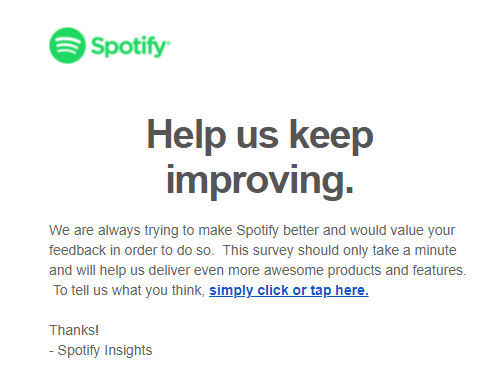
Since Spotify doesn’t have a habit of spamming its customers with promotional emails, seeing “Spotify” in their inbox is bound to get the receiver’s attention. Plus, the email emphasizes that the survey only takes a minute – the reader can believe Spotify values their time. Lastly, the call to action is simple and concise.
Creating Buyer Personas
Accurate buyer personas are guides for product development and marketing efforts. They offer insights into customer needs, preferences, and behaviors to ensure effective resource allocation. By tailoring their products to specific personas, SaaS companies can create solutions that resonate with customers.
Here's an example of a buyer persona by Maze.
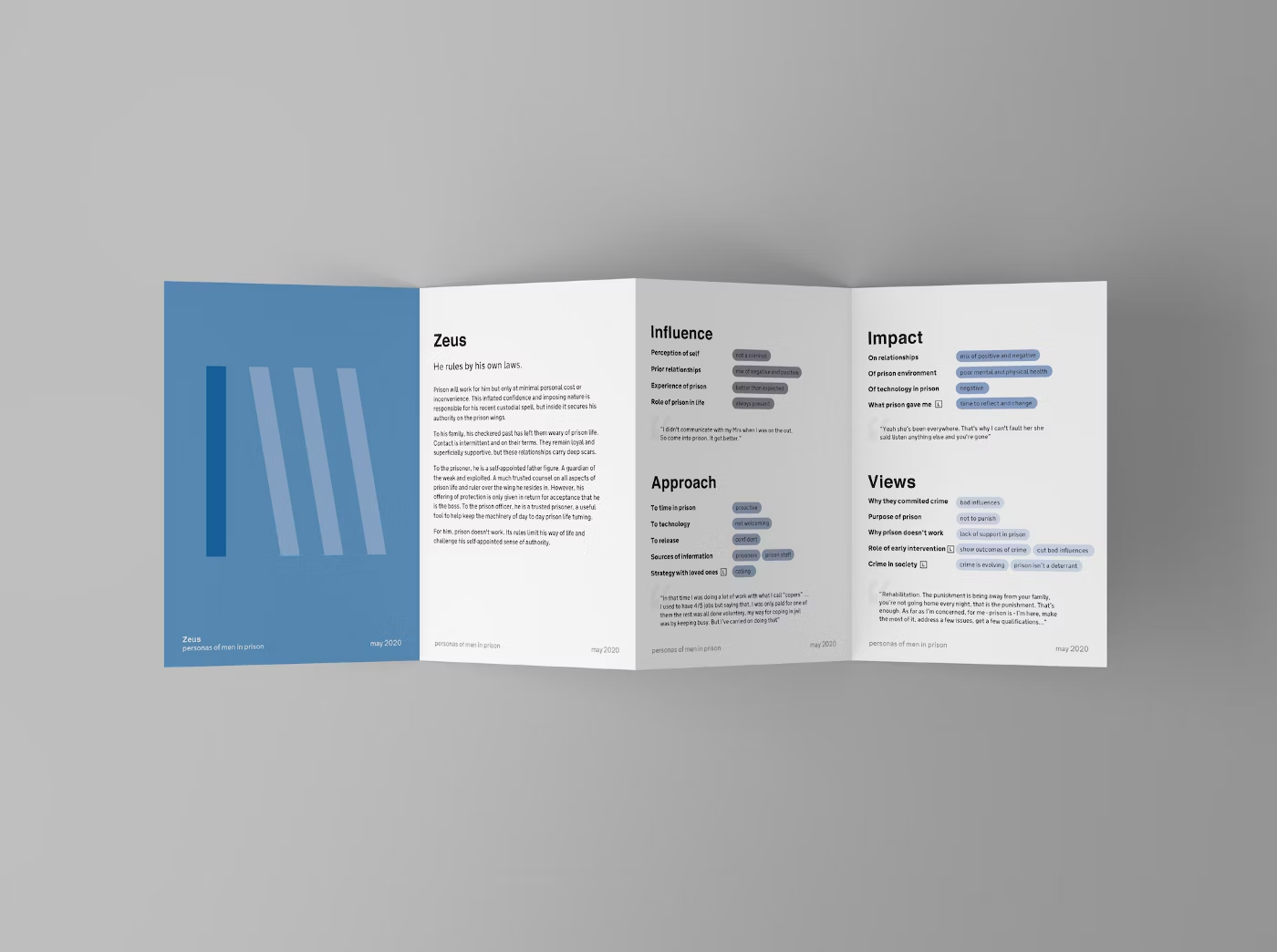
The important thing is that this buyer persona is concise while still covering the right points. In the past, buyer personas would get into unnecessary demographics, but Maze’s modern example gets to the point with a few innovative factors.
Tailoring Marketing Messages
Personalized messaging can more effectively connect you to diverse customer segments. The more you focus on a buyer's preferences and interests, the more your interaction will resonate with the audience. Making the customer feel important increases their chances of converting and staying loyal.
This welcome email clearly demonstrates why Copy Hackers is one of the top copywriting firms. Its emails are targeted and connect with the customer on a personal level. Instead of just dumping links, Jo introduces herself, greets the receiver by name, and offers specific ideas.

More importantly, your marketing promises must align with the actual product experience. It reinforces your integrity, builds trust, and reduces customer churn.
For example, when Nike says they aim to inspire and innovate, they promise top-notch sportswear that motivates buyers to reach new athletic goals. Their shoes have been proven to improve performance time and again. In 2017, a Sports Medicine study found that runners wearing the Nike “4%” shoe use 4% less energy than other shoes.
Nike’s consistent follow-through and integrity have led to a higher customer retention rate, ranking 9th in the world in terms of buyer loyalty.
The Role of Effective Onboarding in Customer Retention
You should know one thing about SaaS onboarding: if the customer can't figure out your product, they'll leave. Most users don't have time to experiment and wait for the "Aha!" moment. That’s why around 23% of churn is caused by poor onboarding.
Here are some best practices to maximize the value and education delivered during your onboarding process.
Personalization
Personalization is essential at every step of the customer journey – not just marketing. Users need to feel heard and attended to as an individual, not as a general group.
A complex, non-personalized onboarding flow can alienate new users, as they’ll assume your product simply isn’t meant for them. On the other hand, a personalized onboarding process means you’re addressing their specific needs right off the bat.
What's a simple but effective way to personalize a user onboarding experience? Offer a welcome page that greets users by name.
Intercom uses this trick perfectly, making the user feel heard and understood. This way, customers are a lot more likely to stick with your product and even offer their feedback when needed.
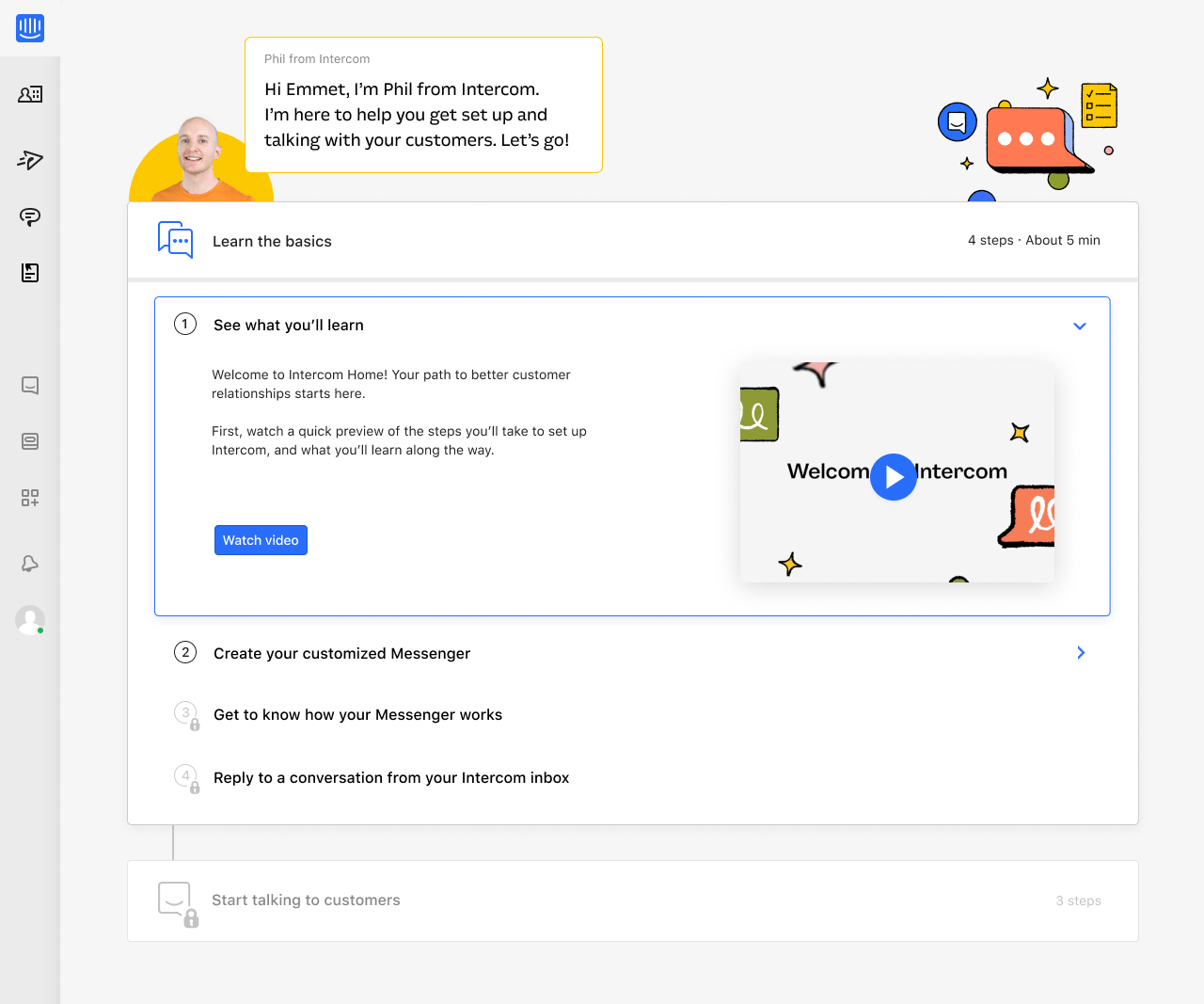
An e-learning SaaS product could also benefit from some personalization in its onboarding flow. For example, it may quiz the user to learn their skill level, interests, and learning objectives. Then, it can offer personalized course recommendations that fit the criteria.
Simplicity and Clarity
The point of onboarding demos and emails is to clarify and simplify things for the user. They should spend minimal time figuring out your product.
Sprout Social is an excellent example of how onboarding should make the product more accessible. Their users need to connect their social media accounts to use their free trial. If they haven't yet, they'll receive this email.
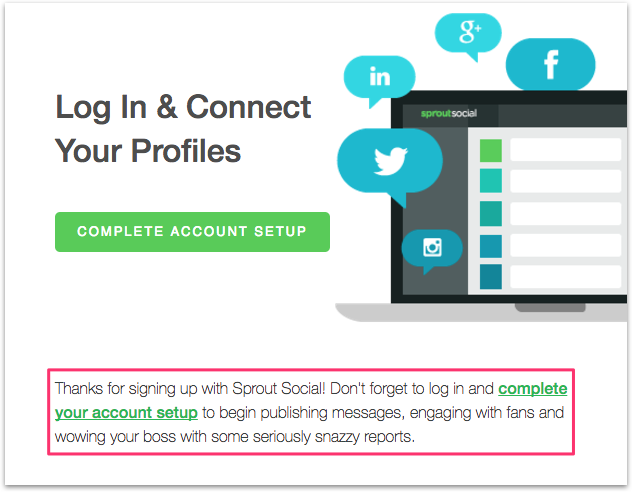
This shows Sprout Social's dedication to reducing friction in the onboarding flow. Asking subscribers to take action is much simpler than waiting for them to figure it out.
Another way to simplify and clarify your onboarding flow is by displaying a step-by-step process. For example, an HR SaaS platform could dedicate one page to each step in the onboarding process. They’ll be able to gather the company's organizational structure, employee roles, and HR processes gradually, and the user will know just what to do.
Value Demonstration
A successful business teaches customers to get value the second they sign up for the product.
It's not just about implementing a "how-to" demo. You'll also need to teach your customers the most efficient way to get exactly what they bought your product for.
Suppose that you're selling CRM suites. If your customer bought your product for email automation, that feature should be a prominent part of onboarding. If it’s not clear why a customer chose your product, you can find out through product onboarding surveys.
Here's an example from ConvertKit.

Another way to demonstrate the value of your product is by simply showing it. For a project management SaaS product, this can look like a guided walkthrough that displays every important feature of the tool. It’ll show the user how easy it is to set up projects, assign tasks, or collaborate with team members.
Pricing Strategies and Their Influence on SaaS Churn
Your pricing strategy can also be one of your biggest churn reasons.
Customers will always be sensitive to prices – if another company offers the same services and quality at a lower cost than yours, they'll switch over. If lowering prices isn’t an option, offering the best quality of services is the only way to reach the top. SaaS businesses can find it tricky to strike the perfect balance of staying affordable while making a profit.
To reduce churn, your pricing strategy must be value-based, transparent, and dynamic.
Developing Transparent, Value-Aligned Pricing Models
There are two steps to creating a transparent, value-aligned pricing mode.
Value-Based Pricing
Value-based pricing means deciding your prices based on how valuable your product or service is to a customer. Customers are a lot likelier to stay with businesses that know the value of their products. It can even reduce churn in the long run.
As a SaaS business, value-based pricing won't look like charging more because your product has a luxury appeal or charging less because your product is essential. You'll need to ask questions like:
- What's your target audience?
- What does the market look like? Are your competitors charging lower?
- How much are buyers willing to pay for your product or specific features?
- Why is your product unique?
- At what point does your product become too cheap or too expensive?
Since SaaS companies only need to develop their products once, you can’t include unit production costs in the price point. Instead, you can value your product based on how well it relieves your customer's pain points. Getting the customers’ opinions on your pricing via feedback surveys can also be helpful.
When you’re done with the research stage, you’ll be able to apply your findings to this formula and price your products expertly.
Value = Brand Advantage (your unique selling point) + Value of Your Product (to your customers)
Transparency
Transparency in pricing is crucial for building trust and credibility with customers. That means displaying your pricing plans and any associated fees upfront to avoid surprises later on.
But don't stop there – give your buyers a breakdown of what they're paying. That means subscription fees, add-on costs, or usage-based charges. Even if they're not yet customers, ensure all pricing information is easy to access.
Zapier shows a great example of transparent pricing.

Managing Pricing Changes Effectively
As your business expands, pricing changes will be inevitable. You'll also face some push-back from customers, typically in the form of churn. Here's what you can do to soften the blow.
Communication
No one likes sneaky price changes. If you keep your customers informed every step of the way, they're much less likely to react negatively to the price bump.
It's no secret why Netflix only has a 3.1% churn rate. The streaming giant notifies customers about price ranges 30 days before implementation so they have enough time to cancel their subscriptions. Despite many price bumps over the years, their user base has remained loyal.
Mitigation Strategies
Certain mitigation strategies can help you soften the blow of a price bump. One approach is to grandfather existing customers into previous pricing plans so they can continue at their current rate for a while. Another strategy is offering discounts or loyalty incentives to reward customers who have been with the company for a long time.
Challenge of Product Updates and Feature Overload
ICQ was once the top global online communication tool. Launched in 1996, it quickly gained 100 million users by 2001. Over time, the original application was bloated with features, leading to the introduction of ICQ Lite, which contained only the top ICQ features.
If you're wondering, "What ever happened to ICQ?" You're not alone. The company eventually faded out due to its absurd churn rate, making it the perfect cautionary tale in the SaaS industry.
Not only does feature bloat make your product harder to use, but it also significantly contributes to churn. Users won't wait around for your interface to get simpler and less cluttered – they'll just switch services. Here's what you need to do.
Gathering Customer Feedback
You may think the best way to find the right features is to ask customers what they want. But for a SaaS business, that can be far from the truth.
Product management is about listening to feedback, not just fulfilling requests. Let's ditch "feature requests" and call them what they really are: customer feedback.
Rather than simply adding features on demand, it's better to assess customer feedback carefully. Understanding your users' problems and needs will help you land on solutions that truly benefit them and your product.
Customers may suggest features based on their experiences, but it's your job to determine the best solutions.
Here's an example of a feedback email from Campaign Monitor. Instead of forcing the customer to make a decision and talk about what features they need, the survey simply aims to gather some opinions. It even finishes off with a gift just for taking the survey.
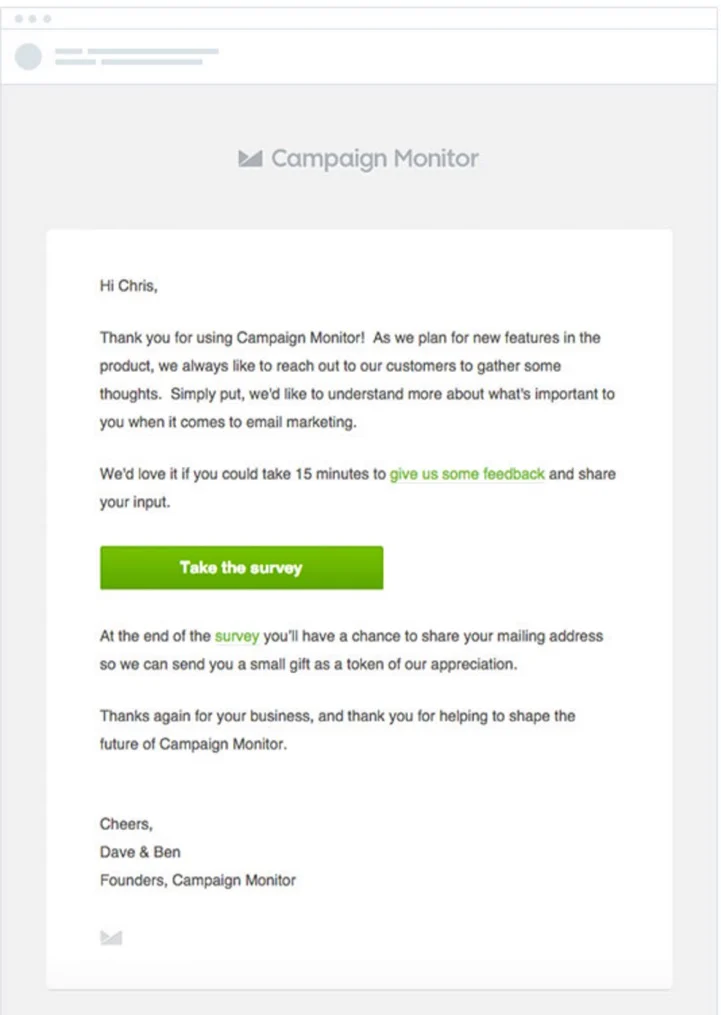
Beyond that, customer feedback is at its most authentic when it’s just among peers. Creating a SaaS community gives your customers the chance to do just that: share honest and candid feedback without directly contacting you.
Clear, Targeted Communication
If you want to learn how to reduce customer churn during significant product updates, you can't skip clear and targeted communication.
Keeping customers informed about upcoming changes can help manage expectations and keep disruptions to their user experience minimal. That can look like:
- Detailed release notes that outline the changes, timelines, and benefits of the updates
- Roadmaps to give customers better visibility into future developments
- Product documentation on how to leverage new features
NordVPN updates its Release Notes page every time the app is upgraded, keeping its users in the loop.
Customer Support as a Churn Source
Providing fast and effective customer support is an invaluable churn reduction strategy. In fact, around 96% of buyers say good service keeps them loyal.
Churn can show up in all types of customer support systems.
Self-Service
According to Retently, 14% of churn is caused by bad customer service. But hiring full-time support agents can be costly, especially for young SaaS companies.
That's where a self-service knowledge base comes in. It's a website section with solutions to common issues, enabling customers to solve problems on their own.
But some customers expect instant solutions. To address this, integrate a help center widget directly into your product. It pulls up articles from your knowledge base, providing seamless self-service support without users leaving the app.
A robust help center typically includes:
- FAQs
- Best practices
- Video guides
- Bug fixes
- Troubleshooting
- How-tos
Take a look at Apple's Help Center, for instance. The simple and concise layout reduces decision fatigue by showing the different devices the customer could need help with. It also displays the three most common issues customers use the Help Center for, bringing the resolution even nearer.
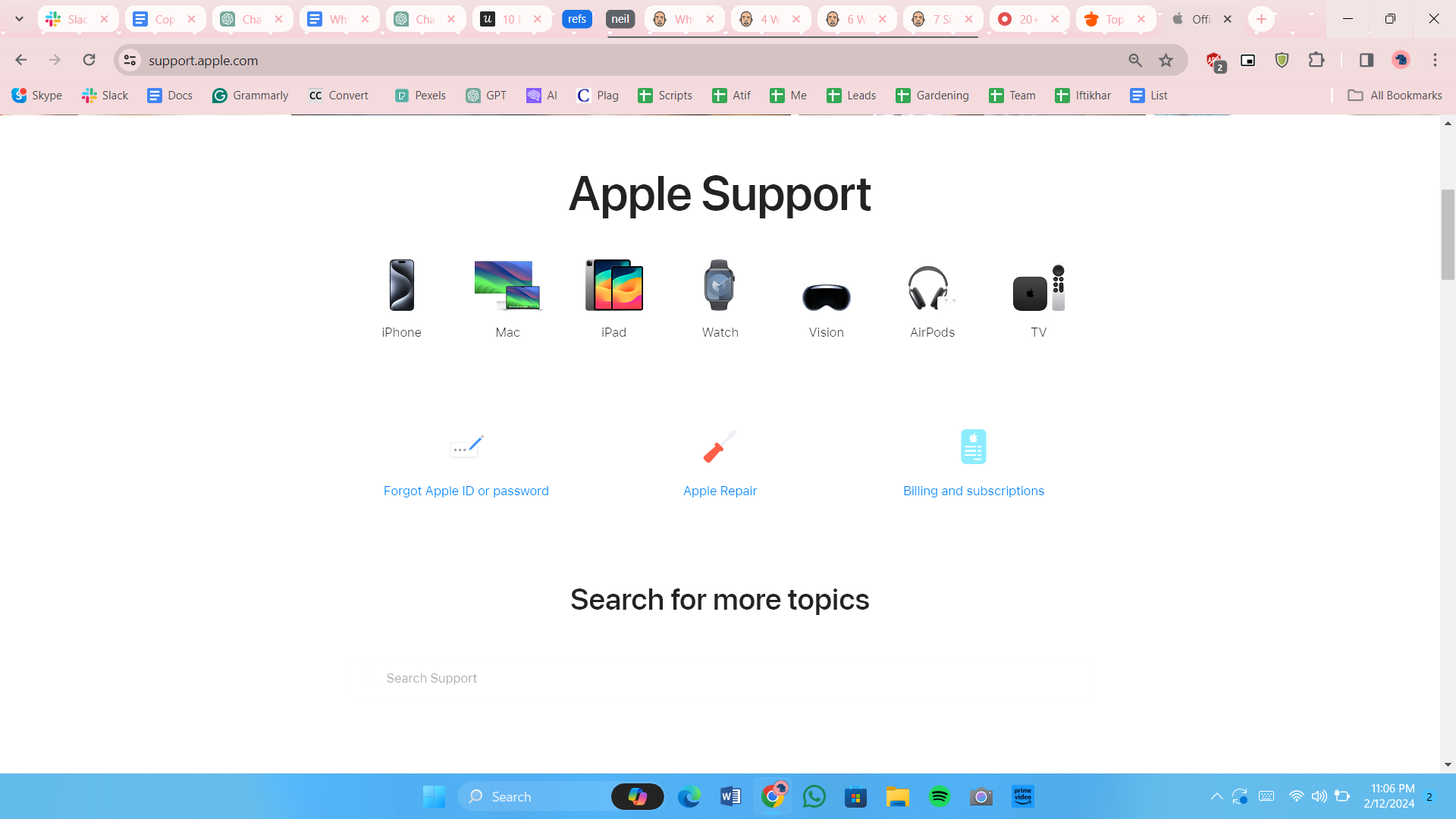
Live Chat
Customers have a lot of power when it comes to online feedback. Even the best businesses have dissatisfied customers.
Live chat is a means to swiftly address these issues and avoid negative publicity on platforms like Twitter. For SaaS businesses, live chat agents should be empowered to:
- Provide discounts
- Waive disputed fees
- Offer detailed customer service
- Make the customer feel heard
Personalized Support
Personalized support is a powerful strategy for enhancing the overall customer experience. It fosters stronger relationships and keeps users loyal.
This approach may include:
- Assigning dedicated account managers
- Reaching out to address potential issues
- Offering customized solutions tailored to each customer's unique situation.
By taking a high-touch approach to support, you can portray your dedication to customer satisfaction and build trust over time. Customers feel valued and understood, leading to reduced churn.
With its technical account managers, Salesforce offers a great example of personalized support.
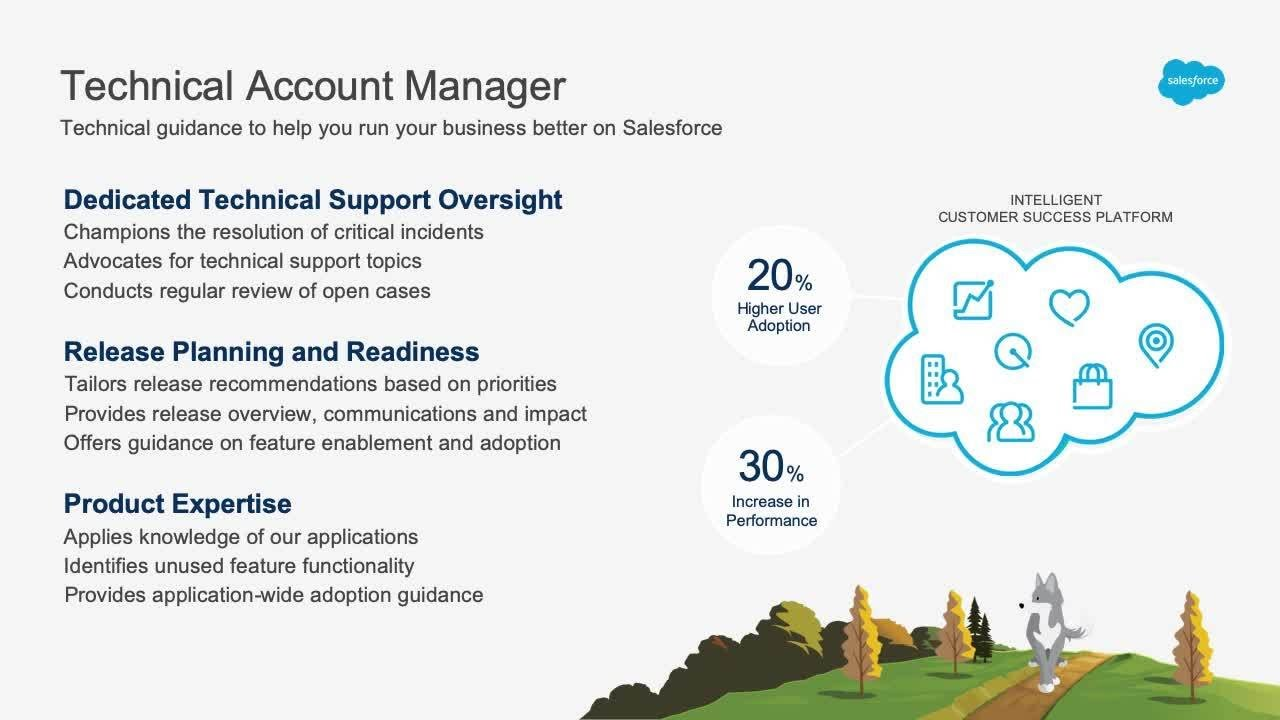
The Perils of Poor Market Fit and Misaligned Customer Acquisition
Attracting the wrong customer segment can have dire consequences for businesses. This can mean higher churn rates and lower profits.
High customer churn can stem from attracting the wrong customers. This occurs when your company lacks clarity on its ideal customer profile (ICP) or buyer persona, resulting in leads that aren't the right fit for your offerings. These customers may lack genuine need or have unrealistic expectations for your product.
So, how do you attract the right segment, people you’re confident will love your product? Let’s take a look at a few tips.
- Different colors, designs, and features appeal to different segments. For example, an automobile company can reach the young male segment with powerful engines and sleek curves. Meanwhile, the family-oriented segment would want a roomy, easy-to-clean car.
- The price of your product majorly affects how it appeals to your target segment. For example, price-sensitive segments like families or low-income households will gravitate toward cheaper products. SaaS products are rarely “exclusive,” so it’s safe to assume that affordable prices can attract your target audience.
- Lastly, it’s all about how and where you promote your product. For example, NordVPN gets a good chunk of its traffic from YouTube sponsorships because the team is conscious about who they sponsor. They typically only sponsor YouTubers with tech-savvy audiences or viewers with frequent internet usage.
When there's a misalignment between the customer's expectations and the product's offerings, dissatisfaction ensues – higher turnover isn't far behind.
Beyond just researching the target segment, you need to make sure your product offerings are clear and concise. That means answering three major points:
- What problems does your product promise to solve?
- Who is the product for?
- Why is it better than your competitors?
The last step to aligning these offerings with customer expectations is improving with constant feedback. It’s crucial to act on feedback as soon as possible, but only if it adds value to the product.
Emotional Disconnect and Unmet Expectations as Catalysts for SaaS Churn
The absence of emotional connections and unmet customer expectations can also lead to churn. Let's delve into how these factors ultimately force customers to leave and what you can do to make them stay.
Absence of Emotional Connections
Marketing and business aren't just a combination of strategies and numbers – emotions also play a massive part in your success. In fact, 70% of viewers are more likely to buy products displayed in ads that move them emotionally.
When customers lack an emotional attachment to a SaaS brand, they're more likely to view it as a transactional relationship. They'll feel indifferent towards your product, switching to a competitor if it offers a more compelling experience.
Apple is a great example, creating an emotional connection with its customers through its "Shot on iPhone" campaign. It gave existing customers a good reason to stick with their Apple ecosystems and potential customers a great one to invest in an iPhone.
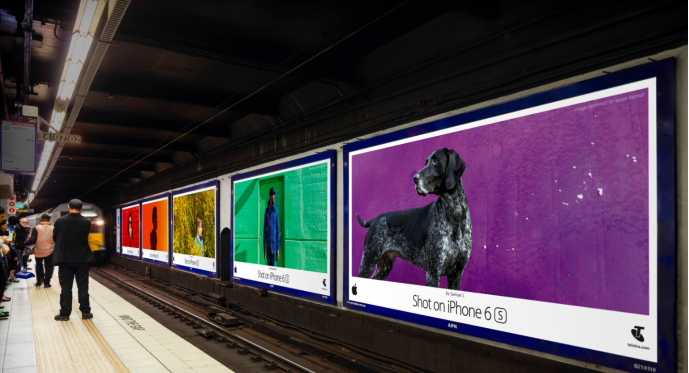
Unaddressed Customer Pain Points
Your SaaS product should be crucial to your customer's success. When it's plagued by bugs, glitches, or downtime that never gets addressed, customers suffer losses in productivity and revenue.
Groove experienced this firsthand, needing to overhaul its entire product to win back customer trust.
Every SaaS company has technical debt, but how you handle issues when they arise determines whether customers stay or leave. So, make sure to respond quickly when your customers inform you of a pain point and keep them updated.
Buffer set a great example in 2013 by updating customers about a hack through a blog post and email. They kept their users informed about the investigation and solution progress.
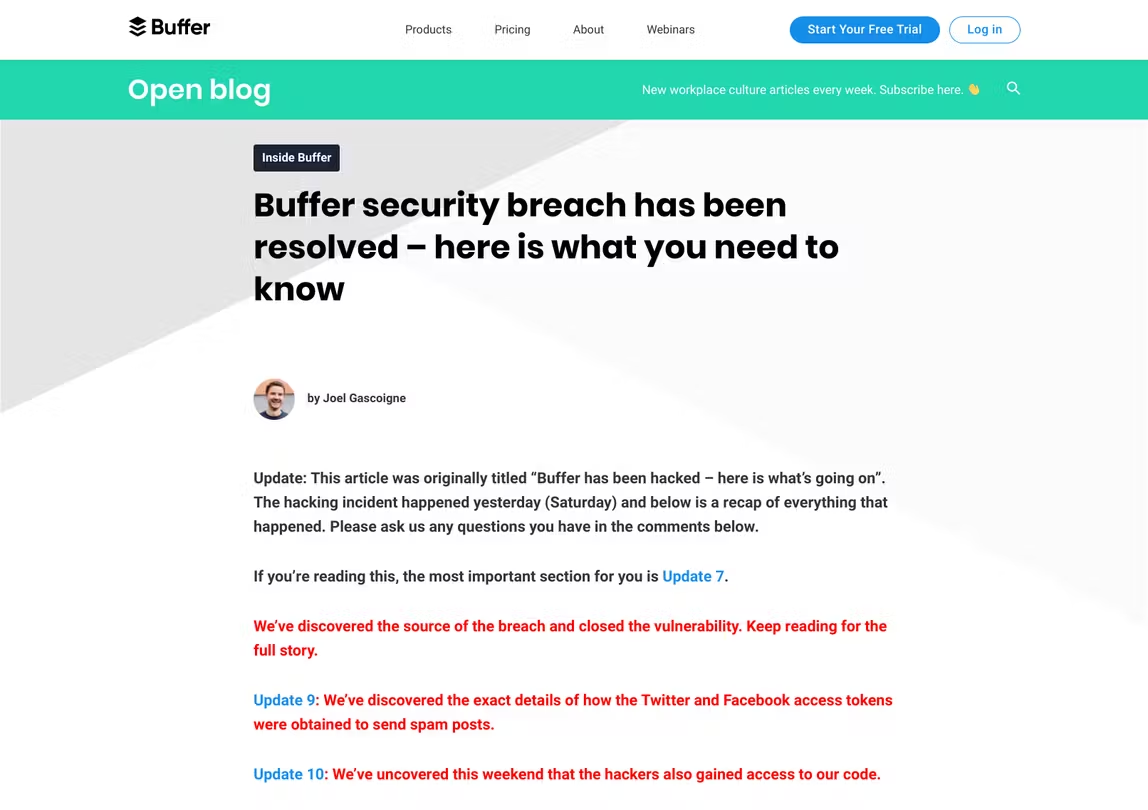
Lack of Community Feeling
SaaS communities can foster customer loyalty and decrease the chance of churn during setbacks. When customers feel isolated and disconnected, they're more likely to seek alternatives.
Channels like emails, Facebook groups, help centers, in-app messaging, or live chat are key. It's crucial to integrate these channels into an omnichannel support tool for efficient management.
Salesforce's Trailblazer Community is a great example. Beyond just offering a safe space to learn, the community has also multiplied the success of its members. A Valoir survey found that three in five members were able to get a new job or promotion thanks to the community.
Here’s why it works:
- Facilitates online and in-person meetings
- Reduces time spent searching for Salesforce-related answers
- Maximizes value derived from Salesforce
- Drives adoption of new and existing features
Ignored Customer Feedback
Ignoring or dismissing customer feedback sends a clear message: their opinions and experiences don't matter. This can lead to frustration and alienation, ultimately driving customers away.
Actively requesting and listening to customer feedback shows your commitment to improvement and customer satisfaction. In fact, Groove was able to reduce their customer churn by 71% just by asking why their customers were leaving.
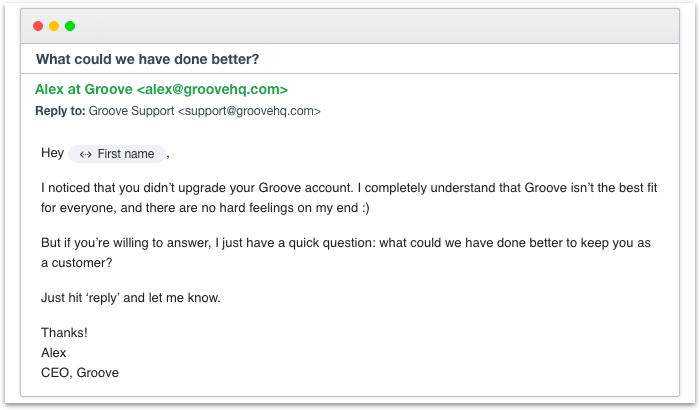
Summary
Crushing your churn rate isn't rocket science, but it takes dedication. Understand your customers, engage them with your product, and keep them satisfied.
The payoff? Increased revenue, loyal customers, and a thriving SaaS business. Don't ignore the reasons for customer churn – address them head-on to avoid pitfalls.